Scientific Facts
| Common Name: | Havana rabbit |
| Scientific Name: | Oryctolagus cuniculus |
| Life Span: | 5 to 8 years |
| Size (Adult): | Medium |
| Weight (Adult) | 4.5 to 6.5 pounds |
| Habitat: | Human homes, gardens, fields, and farms |
| Body Shape: | Compact |
| Country of Origin: | Netherlands |
Physical Description

The Havana rabbit is a medium-sized rabbit that has a compact body size with a weight that must not exceed 6.5 pounds. Their bodies are short and round, and the top should create a half-circle that rises over the hip area right before or down its tail.
The Havana has short and straight legs with toenails with dark coloration. The ears are close together and are shorter compared to another medium-sized breed. The eyes are medium-sized while their heads are short, and their cheeks are full.
This breed is one of the oldest recognized rabbit breeds and is known as the ancestor of popular breeds like the Fee de Marbourg, Gris Perle de Hal, and the Perlefee.
Coat and color
The Havana rabbit has a short and soft flyback fur, which is low-maintenance. You don’t need to spend too much time grooming the Havana’s fur because its short and the rabbit can groom itself. The Havana requires only weekly grooming to keep it in tip-top condition. It sheds minimally, but during molting, its fur should be groomed at least twice weekly.
History of the Breed
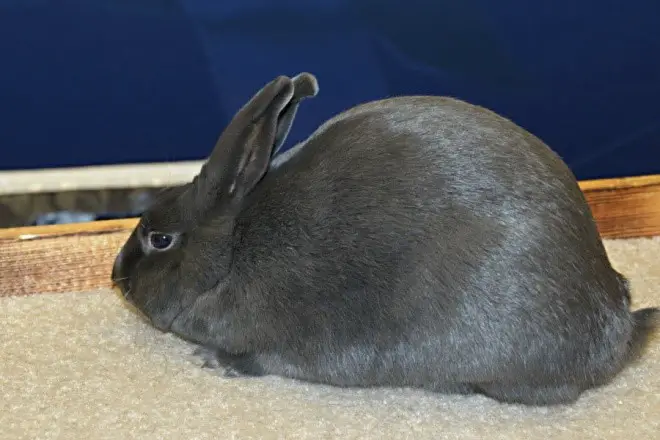
Despite its name, the Havana did not start in Cuba. Havana was initially developed in Holland when a brown rabbit was born from a litter of Dutch does during the 1800s. The rabbit’s lovely dark color inspired local breeders to create a new breed. “Havana” was used to name this rabbit because of its resemblance to Cuban cigars from Havana.
The new breed was brought to the United States in 1916, and it was accepted to the American Rabbit Breeders Association in 1965. The black Havana was soon accepted in 1980, while the broken color variety was created in 2008.
Fast Facts
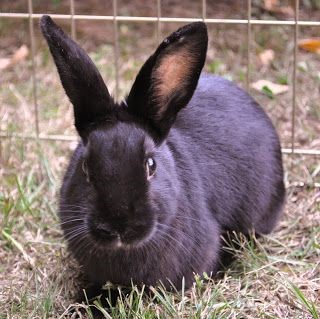
When you see the chocolate fur of Havana rabbits, you’ll remember Cuban cigars; breeders of Havana rabbits once said. But despite the lovely, luxurious brown coat, the Havana does not require much coat care. All it needs is weekly brushing and spot cleaning when its coat is dirty or grimy. Never bathe a rabbit because this will only cause a lot of stress.
Reproduction

When it comes to Havana rabbits, these reproduce just like any other rabbits. This is a domesticated breed, therefore is forced breed in captivity to get baby Havana rabbits. Rabbits have the ability to breed all year round and can start reproducing as early as 5 to 8 weeks old. First, the buck or the male rabbit is placed in his enclosure, and then after a few days, the doe or the female is introduced to the male. Experts say that this practice can increase the chances of breeding successfully.
The female will first remain still as the male sniffs her from head to tail, but sometimes she will resist and will escape and run inside the cage. The male will run after her and then pin her, but she will resist. If this happens for about an hour or so, remove her. Re-introduce the female after an hour.
The doe will soon submit to the buck, and she will let him know by lying down on her side and by allowing the male to sniff and mount her. Rabbit mating happens quickly, and soon the buck will lose interest in the female.
Remove the female from the male’s cage and place her inside a separate cage where she can rest. Gestation can last for 38 days, but it can be shorter or longer.
The female will look for a good area to build a nest, and this means that she will give birth soon. The area that she will prefer is safe, dry, and warm. Also, she will refuse to eat and drink and may not be interested in socializing with other rabbits if she is placed in a communal enclosure. This is the best time to place a birthing box. Fill this with soft hay to help the doe make her nest. She may also use other materials nearby to line her nest and will also use her fur.
The female will give birth to three to five babies. A female can become pregnant three to four times a year. She will nurse her babies and clean them up, but after this, she will leave the nest. The babies are born blind, deaf and naked, and thus, very vulnerable to predators.
The mother will use hay and fur to cover her nest before she leaves and will only come back nightly to nurse them for only a few minutes. The newborns will open their eyes from 5 to 7 days and then wean from their mother on the 10th day.
Personality and Behavior

Havana rabbits are calm and sweet. This breed will bond with their owners almost instantly as long as they are handled well, fed, and socialized with other rabbits and people. Havanas are good to show rabbits as they are pet rabbits. They are not very energetic but may also love to run and do mid-air hops once in a while.
This breed will do fine indoors, but you must let it out to get some fresh air regularly. It loves to stay on your lap, to get pets and cuddles but doesn’t be surprised if it is not receptive sometimes and may even want to remain on their own. With this behavior, the Havana is a good companion, a rabbit for seniors and also for single folks.
Comparable Breeds
The Havana rabbit is comparable with a Dutch rabbit in such a way that both have a compact body. The Dutch rabbit is small or has a mini size with a life span of 5 to 8 years. It weighs just 4 to 5.5 pounds and is calm, energetic, friendly, and easygoing. This breed is for people who live in a small apartment or home and also for singles or seniors.
Care of Havana rabbits
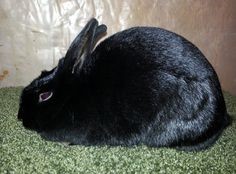
The Havana rabbit is one of the easiest to take care of, and caring for this breed is like caring for other rabbit breeds. You should make sure that your pet is provided with the right and safe food, proper housing or enclosure, professional medical treatment, and must be with some rabbit companions.
An important part of a rabbit’s diet is hay. This is the bulk of a rabbit’s diet and should go hand in hand with rabbit pellets, which contain vitamins and minerals for your rabbit’s good health. Include vegetables and fruits to your pet’s meals for a healthy, well-rounded diet.
You must place unlimited fresh water and hay. An inverted water bottle with a spout at the end is also a good spill-proof way to drink. Hay can grind the rabbit’s teeth naturally plus helps make their digestive tracts healthy and regular.
Also, make sure that your pet is eating the right food. Don’t just give regular produce which may have pesticides, toxins, and herbicides. Feed your rabbits, organic fruits, and vegetables. Younger rabbits will need alfalfa hay because this is rich in calcium needed for growing bones. On the other hand, adult Havana rabbits will eat legume hay. If these are not available in your area, you can always provide regular hay instead.
Captive-bred rabbits can become calm and friendly pets as long as you invest time and effort to train them well. One way is to constantly interact with your pet rabbit. Train it to come to you to come when you call its name or to eat food from its hand. Also, rabbits are social animals and will need companions aside from being with their owners. Rabbits that grow up having constant companions and play or train with their owners will grow up to be healthier, happier, and well-rounded individuals.
Havana rabbits are just like other domestic rabbits because they are meticulous groomers. Rabbits also groom each other and experts to say that this one way to bond with other rabbits. You may notice mother rabbits grooming her babies in the nest, but this won’t last as she will leave the nest as soon as she can. She will return only in the evening to nurse her babies for only a few minutes.
Havana rabbits are also just like other domestic rabbits because this is active in the daytime and sleep in the nighttime. Therefore, feeding your pet rabbit should be done in the morning when they are active. Captive rabbits can sleep many hours a day and may sleep close together to keep themselves warm.
Supplies and Cages

Havana rabbits are large and energetic, and therefore it needs a big enclosure. With a large cage indoors or out, it can play, sleep, socialize with other rabbits, and more. This cage should be made of wire and must have a very strong frame. The bottom of the cage should be removable because this is where the rabbit’s droppings will fall. All you need to do is to remove the pan and dispose of the poop as well. The floor must have soft bedding and lined with good quality bedding.
Place a rabbit hay feeder along the side of the enclosure. Place hay so your rabbit can eat when it is hungry. And for the bedding, use hay, wood pellets, or horse bedding. You can also purchase bedding material from pet supplies stores.
To clean the cage, remove your pets and place these in a safe and clean container or cage. In cleaning, use a safe cleaner or cleaning product such as white vinegar, baking soda, or lemon juice. Never use household cleaners because these could have dangerous ingredients that can make your pets sick.
Use a separate or extra cage to take care of baby Havana rabbits. Newborn rabbits are naked, deaf, and blind. These should have a warm enclosure to keep them warm and safe. A smaller cage with cage lamp or lighting will suffice to keep baby rabbits dry, warm, and safe from predators.
Health Concerns
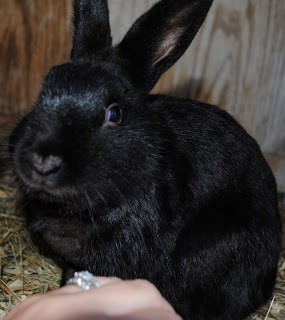
A Havana rabbit is a healthy domestic rabbit breed, and these are not affected by any kind of specific disease. The most common condition that the Havana rabbit may be affected with are pests such as mites, ticks, and fleas. These may be found naturally inside its enclosure in the wild, in your garden, or inside its outdoor enclosure.
This breed is not immune to common rabbit diseases, which is why you must monitor your rabbit’s health and temperament. Take note that any kind of change must be due to illness. So, as early as your pet opens its eyes and weans from its mother, take it to the vet for vaccinations and tests.
The vet will also recommend tests to assess the health and development of your pet. Smaller and younger rabbits may have sensitive digestive systems, especially in rabbits that are younger than two months. These rabbits may be prone to enteritis, bloat, stasis, and other conditions of the digestive tract.
Also, check for ear or fur parasites such as mites, fleas, and ticks. Rabbits that have these parasites usually have poor hygiene and are kept in dirty surroundings or enclosures.
Check your rabbit for signs of illness like poor appetite, nasal and eye discharges, loose stools, constipation, and vomiting. Be mindful of signs like an unsteady gait, restlessness, teeth grating, and sleeping for long periods because these could be signs of a serious condition.
Also, deworm your pet rabbits and other pets. Havana must be treated for worms at least twice a year and must be treated during springtime and fall. This is an important concern, especially with rabbits that are from the wild or born from wild parents. There are many deworming products, but a deworming paste is the best idea. Use a pea-sized deworming paste and place this in the rabbit’s mouth. The rabbit is very meticulous, and this will lick and swallow the medication. You should follow the dose depending on your vet’s recommendations.
Dental Care
A rabbit’s teeth will grow throughout its life, and sometimes, their teeth can grow so long that these can pierce their mouth and gums. When this happens, it can be very painful and too painful to eat anything. So make sure that the rabbit’s teeth don’t overgrow to avoid pain and stress. Help your rabbit grind their teeth by offering hay. You may also use pieces of wood, baskets, or other toys and accessories to fill the rabbit’s teeth.
Spaying or Neutering
Rabbits are naturally promiscuous, and if not properly controlled, you can have a house full of bunnies in just a year! Control this by spaying or neutering your pets. Spaying and neutering must be done at a young age, but some vets prefer to wait until the rabbits are six months of age.
Havana rabbits are also neutered at a young age because some pet owners believe that neutering reduces aggression. Some vets neuter bucks when they are three months, which might be too early. So for questions about spaying and neutering, consult your vet at once.
Grooming

Havana rabbits have short to medium furs depending on the color of the coat. But it does not matter what color of the coat your rabbit has; it will need regular grooming. You should use a small but strong brush to keep the fur clean, shiny, and free from pests. Groom at least once or twice a week.
Grooming should be done more frequently during their molting period. Molting can happen once or twice a year, and this is when a rabbit sheds ts old fur to make room for new fur. The rabbit can eat their fur to prevent wool blocks and to help groom your pet.
Never bath your rabbit because this can cause stress. Use a damp towel to spot clean your pet. Just wipe the rabbit down with the towel and use a dry one to finish off. Also, trim your rabbit’s nails regularly and check the rabbit’s mouth for overgrown teeth and its ears for pests and wool impaction.
Availability – Where to Get One?
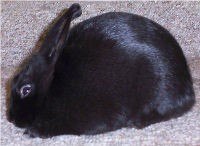
You can buy a Havana rabbit from a breeder or a retailer. The price will depend on whether you are getting a pet rabbit or a show rabbit. The price may change depending on the rabbit’s gender, size, coat quality, coat color, and overall appearance.
It’s important to buy only from a reputable breeder, look for one that breeds healthy Havana rabbits that have no genetic problems. Aside from visiting a breeder, you can also find this breed in local trade fairs and events. Some shows and contests highlight this breed, which is sponsored by the ARBA.
How to Care for a Havana rabbit
This is a summary of how to care for a rabbit breed known as the Havana rabbit. Caring for a Havana is just like caring for other rabbits. Consider the four basic components of rabbit care: such as the correct diet, housing, companionship, and medical care.
A rabbit’s correct diet is composed of more hay (around 70 to 80% of its daily diet). Hay is important in their diet to grind their teeth, keep their digestive system healthy, and maintain regular bowel movements. Other foods are rabbit pellets that have added nutrients, vegetables, and fruits. You may also give them food present in their natural habitats like grasses, twigs, birch, and weeds.
Always keep water and hay inside the rabbit’s cage. Place water in a large, heavy, and shallow dish so that your rabbit can drink from it without spilling. Captive-bred rabbits like Havana can only become a calm and docile pet when you take time to train and bond with it. You must interact with your pet daily. Also, rabbits are social animals and will need some companions.
So, if you don’t have the time and resources to care for two or more rabbits, then you might be better off with other pets. Your rabbit can grow healthy and develop a good temperament and a docile behavior when it socializes with you and your family.
Finally, don’t forget to take your pet to the vet because it needs vaccinations, basic physical tests and should be examined by the vet before it is allowed to remain with other rabbits, pets, and other people in your home. And as a good pet owner, you must understand the different signs of illness in rabbits so you can take it to the vet for any symptom.
FAQs
How do you tame a rabbit?
If you want to tame a wild rabbit, then forget it because this cannot be tamed because you might end up getting hurt. You may only train a captive-bred rabbit because these rabbits have a calm and docile behavior and are friendlier compared to wild rabbits.
Will Havana rabbits eat fruits and vegetables?
Havana rabbits will eat fruits and vegetables, and you may also feed your Havana rabbits commercially-prepared pellets or rabbit food. These are rich in nutrients that will benefit your pet’s good health.
Will Havana rabbits eat their own droppings?
Similar to all rabbit breeds, the Havana will eat its poop because it knows that it still has nutrients in them. But after eating their poop, they won’t do it the second time. It is still unknown as to why rabbits do this, but you can prevent this by removing their droppings as soon as they poop.
Can you keep a Havana rabbit as a pet?
You can keep the Havana rabbit as a pet due to its docile and sweet temperament. This is a good pet for families and families with children, and space is very important since Havana rabbits are active rabbits.
What do Havana rabbits eat?
Havana rabbits will eat only plants because it is a herbivore. These will eat all parts of the plant from the plant roots, bark, seeds, weeds, flowers, and the leaves. When in captive, it can eat rabbit food, vegetables, seeds, nuts, and fruits.
Should you rescue a wild rabbit from the forest?
Don’t ever get a wild animal such as a rabbit from the forest. You won’t be able to tame it and make it your pet because it will remain wild. If you find an injured rabbit or a rabbit that needs help, you must call animal services for help.
Are Havana rabbits endangered?
No, Havana rabbits are not endangered. Havana rabbits are a breed of domesticated rabbits and hence are available from local and international breeders, and also anywhere it is available for purchase. It is most especially seen in human homes and maybe living with other rabbits or other pets.
Can Havana rabbits swim?
Havana rabbits can swim if it needs to, but it won’t swim as good as other animals. Take note that most rabbits do not want to get wet and will not like a bath because this is stressful to them.
Are Havana rabbits carnivorous animals?
No, these rabbits are not carnivorous. Rabbits are herbivores, which means that these won’t eat any kind of meat. This rabbit will only eat plants or plant parts such as roots, leaves, flowers, stems, seeds, and more.
Where do Havana rabbits live?
Havana rabbits cannot be found in the wild because these are domesticated rabbits. Havana rabbits reside in human areas and commercial areas like breeding kennels, pet stores, and human homes as pets. For Havana pets, these may be placed in large indoor or outdoor cages and should be in groups for companionship.
How do you deal with baby Havana rabbits?
If you want to care for baby Havana rabbits, place the kits in a comfortable and warm cage. Feed the baby rabbits soft, pureed food and place these in a safe and warm. Protect the kittens from predators like your pet cat or pet dog. For wild-caught rabbits, never pick them up and call animal services to have these rescued properly.
Can you place Havana rabbits indoors or inside your home?
You may let a rabbit remain indoors but only under your supervision. You must only use a portable fence to keep it off areas that you don’t want it to stay. You must rabbit-proof your home before letting your pets out of their enclosure.
Are Havana rabbits territorial?
Pet owners say that Havana rabbits are also like other rabbits that these may become territorial when kept in a small cage. Males will develop aggressive behavior and may become very dangerous to other males, most especially during the breeding season. The aggressive males can attack other males in the cage to defend their territory.
Does it hurt when a Havana rabbit scratches you?
Yes, Havana rabbits have sharp claws on their front and hind feet. This rabbit will kick hard with its hind feet, which can cause a lot of damage. Havana rabbits will do this when it feels threatened, cornered, or afraid. So be sure to handle it well, and you gain its trust first before you pick it up.
Can Havana rabbits escape their enclosures?
Yes, Havana rabbits can escape their cages by kicking these down and may also dig around cages to escape. These can also jump over and escape, and these may use force if necessary to escape.
Do you need to use a heater inside a rabbit’s cage?
Instead of a heater, you may use a cage lamp to provide heat. In cold climates, you must use a small portable heater near the cage to create a warm and comfortable place for your pet and his companions to remain. It is also needed for incubating kits.
Will a mother Havana eat her young?
Some rabbits will eat their young. And if you spot a female Havana eating her young, remove it from the litter or the nest and don’t let it breed anymore. Rescue the rabbits and raise them in captivity inside another cage.
Can you keep two or more Havanas inside one cage?
You can keep two or more rabbits in one cage as long as you have a cage that’s large for all pets. The cage should be large, and safe so that your rabbit or rabbits can remain comfortable in their cages and safe as well.
How do you clean a Havana rabbit’s cage?
First, remove the rabbit inside the cage and place it in a clean cage. Remove the pan under the cage and clean this first. Hose the cage and use a brush and cleaning product. Scrub the cage walls, bottom, accessories, and toys. Change the cage bedding and dry everything before the rabbit is placed back inside the cage.
Where do you place a Havana rabbit’s cage?
Whether you want to place the rabbit cage Indoors or outdoors, remember the following pros and cons. You may place the cage indoors to protect it from the elements, especially the cold, but your pet will have a limited area to play. An indoor cage may not be enough to house a large, adult rabbit. But when you place your cage outdoors, the rabbits may have to deal with the elements, but they will have a large area to play and move about.
Can you prevent a rabbit from eating his droppings?
You can stop a rabbit from eating his poop by removing the droppings after the rabbit defecates, but no matter what, these animals will still eat their dropping because they know it still has nutrients. This is why the rabbit is quick to eat the poop as soon as it defecates.
What happens when the teeth of a rabbit grow longer?
When the teeth become longer, these can pierce their mouths and gums and cause a lot of pain, which may also affect their appetite. This is why you must visit the dentist regularly. You may also help it by regularly feeding it hay since this can grind their teeth short as it chews.
How large must a Havana’s cage be?
One Havana rabbit must be kept in a very large enclosure because of its size. For two large rabbits, you must double the size of this area. You must never overlook cage size and make sure that your rabbits have ample space to play, eat, and sleep. Also, consider the number of rabbits that will use the enclosure and their temperament and behavior.
Are rabbit bites fatal to humans?
Yes, rabbit bites are dangerous because the rabbit may have rabies. You must take note that rabbit teeth may be huge and can easily tear off the skin, and this can lead to an infected wound.
How often do you take your pet to visit the vet?
Rabbits must visit the vet at least two times a year. Young rabbits should receive vaccinations against rabbit diseases as early as possible and have an initial visit to a vet when they are just a few days or weeks old to rule out any illness.
Can rabbit diseases make humans sick?
Some rabbit diseases may affect only rabbits, while some may be transferred to humans. So, if your rabbit is sick, take it to the vet as soon as you can to check if the illness is dangerous to humans. You must learn the different signs of illnesses such as poor appetite, loose stools, constipation, sneezing, breathing irregularities, and changes in behavior. You must take your pet to the vet as soon as you spot any of these.
Do Havana rabbits have good hearing?
The Havana rabbit has good hearing and can hear its predators from far away, so it has enough time to jump and escape any kind of threat.
Can rabbits see well while in the dark?
Yes, rabbits have good vision, even in the dark. This is why some species like to forage for food, especially during nighttime. Rabbits such as Havana also have a good sense of smell and hearing, which allows them to locate predators near their area.
Can you walk your rabbit in a collar and leash?
Some pet owners are happy that they can walk their pet rabbits in a collar and leash, but some say that this not for all rabbits and may depend on the breed of rabbit
Will Havana rabbits know who is their owner?
Some rabbit owners say that their pet rabbits can recognize them and can tell if they are handled by their owners or by a stranger or someone else.
How many rabbits can you keep as a pet?
You can keep three or more rabbits as pets as long as you have a large cage to keep all your pets comfortable and healthy. Remember that having only one rabbit will make it lonely, and loneliness can affect a rabbit’s health.
Will rabbits eat insects and insect eggs?
No, rabbits won’t eat insects and will eat only plant and plant parts, rabbit pellets, fruits, and vegetables. And when you feed your rabbits produce, make sure that these are organic to avoid pesticides, toxins, and dangerous.
Where do rabbits sleep when in the wild?
In the wild, rabbits can sleep in warrens, which are holes or burrows. Rabbits can dig holes as deep as several inches to stay inside all day. Rabbits can also use their warrens to sleep. In captivity, they are forced to remain in an enclosure that can accommodate several rabbits. This is an enclosure that is safe and secure from predators.
Can pet rabbits be patient with babies and young children?
Some rabbits don’t want to be with young children and may not want them to handle them. Meanwhile, some rabbits are calm, docile, and friendly and won’t mind when held and petted by young kids but not babies.
Will your rabbit survive the cold?
Some rabbits can survive the cold and will find it fun. Some rabbits may even change their fur color to adapt to the freezing climate while some may not survive the cold, which is true for desert rabbits breeds.
Can you place the cage of Havana rabbits near other breeds?
Yes, and you don’t have to worry because there’s nothing to worry about because this rabbit is very friendly, docile and calm.
What do you do when you find abandoned baby rabbits?
If wild baby rabbits are abandoned in their nests, call animal service right away. You should never rescue baby rabbits from the wild to take care of your home, always have professional care for these wild animals.
Are rabbits cannibals?
You may have heard of females eating their young, and this is true and observed in some female rabbits. Experts say that this happens because the female has no food or water inside its enclosure. Some say that rabbits do this to remove any traces of tissue, blood, and smell from a stillborn baby and to protect kittens from predators when a baby is stillborn.
Can rabbits survive the cold?
Yes, rabbits can remain in the cold and survive by foraging for food that’s under the freezing snow. Rabbits will use their legs to forage and to dig out roots, shrubs, berries, and other morsels of food.
Can Havana rabbits stay outdoors?
A pet Havana rabbit may stay outdoors, but you must rabbit-proof your yard or outdoor area. A strong portable perimeter fencing is a safe way to secure the rabbit and to avoid off-limits areas. Make sure to bury the fence poles to prevent the rabbit from digging it out and escaping.
How old do you spay or neuter a rabbit?
The age when you spay or neuter pet rabbits depend on the vet. Some vets neuter bucks at 3 months while some vets will wait when the rabbit is 5 to 6 months.

